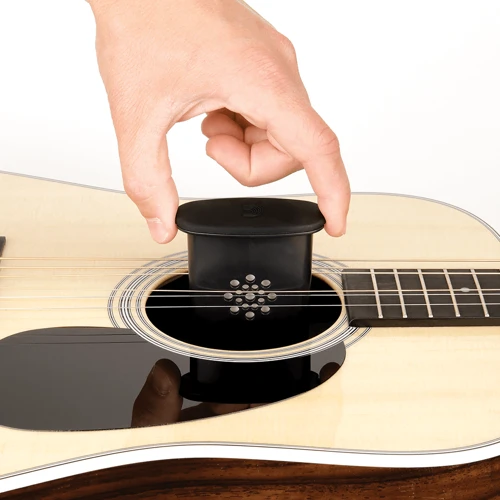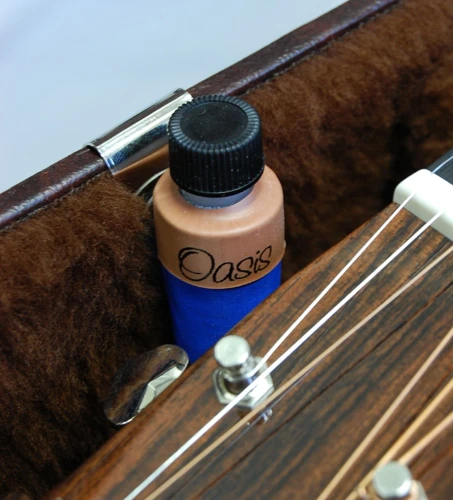As a guitar enthusiast, you understand the importance of keeping your instrument in top condition. One crucial factor in maintaining the quality of your guitar is controlling the humidity level within its case. Fluctuations in humidity can lead to warping, cracking, or other damage to your beloved guitar. To prevent such issues, investing in a high-quality humidifier for your guitar case is essential. In this article, we will explore the best humidifiers available for guitar cases and how they can help preserve the integrity of your instrument.
The Importance of Humidity Control for Guitars
Guitars are delicate instruments that are sensitive to changes in temperature and humidity. When exposed to low humidity levels, guitars can dry out, causing the wood to shrink and potentially crack. On the other hand, high humidity levels can lead to swelling and warping of the wood, affecting the playability and sound quality of the instrument. To ensure that your guitar remains in optimal condition, maintaining the right humidity level is crucial.
Why You Need a Humidifier for Your Guitar Case
A guitar case humidifier is a simple yet effective solution to control the humidity levels around your instrument. By placing a humidifier inside your guitar case, you can create a stable environment that protects your guitar from the detrimental effects of fluctuating humidity. Whether you live in a dry climate or experience seasonal changes in humidity, a humidifier can provide the necessary moisture to keep your guitar in top shape.
Factors to Consider When Choosing a Guitar Case Humidifier
When selecting a humidifier for your guitar case, there are several factors to consider to ensure you choose the best option for your instrument. The size of your guitar case, the climate in which you live, and the material of your guitar are all important considerations. Additionally, you’ll want to look for a humidifier that is easy to use, reliable, and low maintenance. With these factors in mind, let’s explore some of the best humidifiers for guitar cases on the market.
The Best Humidifiers for Guitar Cases
1. D’Addario Two-Way Humidification System
The D’Addario Two-Way Humidification System is a popular choice among guitarists for its simplicity and effectiveness. This system uses a two-way humidity control technology that automatically adjusts to the optimal humidity level, ensuring that your guitar is always protected. The humidification packets are long-lasting and easy to replace, making maintenance a breeze. Whether you have an acoustic, electric, or classical guitar, the D’Addario system is suitable for all types of instruments.
2. Oasis OH-1 Guitar Humidifier
The Oasis OH-1 Guitar Humidifier is another top contender in the world of guitar case humidifiers. This humidifier features a unique design that allows for maximum water vapor output while preventing leaks or spills. The OH-1 is easy to refill and can last for weeks before needing to be replenished. Its compact size makes it ideal for smaller guitar cases, ensuring that your instrument receives the proper moisture it needs to stay in pristine condition.
3. Planet Waves Humidipak
The Planet Waves Humidipak is a convenient and hassle-free option for guitarists looking to maintain the humidity levels in their instrument cases. This system uses a two-way humidity control technology that eliminates the guesswork out of humidification. The Humidipak packets are disposable and can last for several months, making them a cost-effective choice for guitarists who want a low-maintenance solution. With the Planet Waves Humidipak, you can rest assured that your guitar is protected from the effects of dry or humid conditions.
4. Music Nomad MN300 Humitar Humidifier
The Music Nomad MN300 Humitar Humidifier is a versatile option that can be used in both guitar cases and room humidifiers. This humidifier features a sponge material that holds more water than traditional humidifiers, providing long-lasting moisture for your guitar. The Humitar is easy to use and refill, making it a convenient choice for guitarists on the go. With its sleek design and efficient humidification capabilities, the Music Nomad MN300 Humitar is a reliable option for keeping your guitar in optimal playing condition.
5. Boveda 49% RH 2-Way Humidity Control Pack
The Boveda 49% RH 2-Way Humidity Control Pack is a versatile humidification solution that is perfect for maintaining the moisture levels in your guitar case. This pack uses a two-way humidity control technology that responds to ambient conditions, ensuring that your guitar is always protected from the effects of dry or humid environments. The Boveda packs are easy to use and can last for several months before needing to be replaced. With the Boveda 49% RH pack, you can enjoy peace of mind knowing that your guitar is safe from the damaging effects of improper humidity levels.
Looking for the perfect humidifier for your guitar case? Check out our articles on humidifiers for acoustic guitars, humidifier guitar safety, and choosing the right guitar case for all your musical needs. Also, don’t miss our recommendations for budget pedals for country guitar and affordable acoustic guitar cases to complete your setup!
Conclusion
Investing in a high-quality humidifier for your guitar case is essential for protecting your instrument from the harmful effects of fluctuating humidity levels. Whether you choose the D’Addario Two-Way Humidification System, Oasis OH-1 Guitar Humidifier, Planet Waves Humidipak, Music Nomad MN300 Humitar Humidifier, or Boveda 49% RH 2-Way Humidity Control Pack, each of these options offers reliable and effective humidification for your guitar. By maintaining the proper humidity level within your guitar case, you can ensure that your instrument remains in top condition and continues to provide you with beautiful music for years to come.



